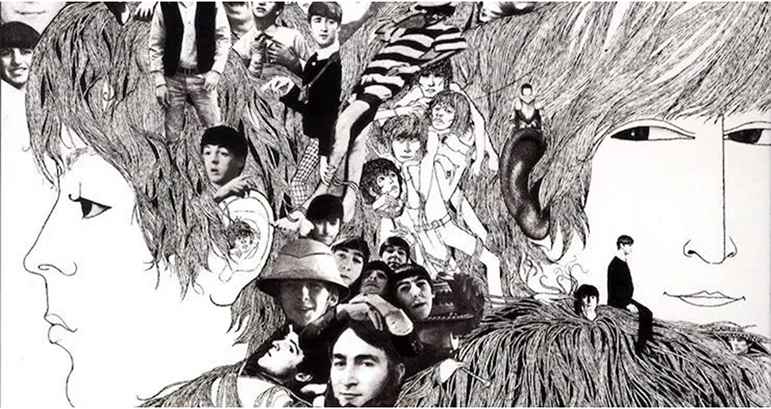Behind The Scenes Of The Beatles’ Groundbreaking ‘Revolver’ Album 54 Years Later [Listen]
![Behind The Scenes Of The Beatles’ Groundbreaking ‘Revolver’ Album 54 Years Later [Listen]](https://mccartney.com/wp-content/uploads/2020/08/Screen-Shot-2020-08-06-at-9.21.02-AM-1-680x365_c.png)
1966’s Revolver is the album that ultimately cemented The Beatles‘ reputation as creative studio geniuses atop the pyramid of commercial music at the time. It may not have the epic range of material as heard on The White Album, or the cohesiveness of Sgt. Pepper’s Lonely Hearts Club Band released the following year, but Revolver marks the first time where the Beatles truly stepped outside of their comfort zone in the studio and expanded the idea of what rock and roll could be.
Coming off 1965’s Rubber Soul, the Beatles were at the peak of their fame. Yet, each member was growing increasingly disillusioned with all that was involved with “The Beatles” and their growing legion of fans. John Lennon was perhaps the most affected, causing a huge uproar in the United States when he proclaimed that the Beatles were “bigger than Jesus Christ.” The demands of the road, the size of the shows, and the non-stop schedule had pushed the band to their limits, so they cleared a few months from their calendar to give themselves time to prepare for their next album. The band used this time to delve deep into their new-found love of LSD–in particular Lennon and George Harrison–all the while experimenting with new instruments and styles of music in an attempt to augment their sound.
By 1966, their newly-discovered depths of creativity allowed the four musicians to embrace their studio environment with a new purpose while hoping to change the direction of their sound by using new recording techniques, instrumentation, and song arrangements. The resulting recordings were a slightly psychedelic-but-commercial mix of rock, orchestral, R&B, and Indian classical styles that re-invigorated the band and their fans.
When they finally entered Abbey Road Studios in April 1966, the band got right down to work and discovered, with the extended time they had to craft each song, their experimentation had reached new levels. During the recording process, the band used Indian instruments and musicians for “Love You To”, tape loops on “Tomorrow Never Knows”), backward recordings on “I’m Only Sleeping”, vari-speeding “Here, There and Everywhere”, and nothing but string instruments on “Eleanor Rigby”.
Additionally, audio engineers George Martin and Geoff Emorick used non-traditional techniques to record Paul McCartney‘s bass parts and Ringo Starr‘s drum parts, leading to the album’s heavy emphasis on rhythm. Even “Yellow Submarine” has its innovative moments with Martin and Emorick, alongside the Rolling Stones’ Mick Jagger and Brian Jones, using bells, gongs, whistles, and more to create the track’s underwater atmosphere.
The album’s lyrical content was groundbreaking as well. Lennon and Harrison’s contributions to the record were filled with psychedelic references, introspection, and questions about reality, while McCartney delved deeper into his lifelong exploration of love. This record marked the first time that Harrison and McCartney would stretch themselves as songwriters, leading to the Beatles’ first true collaborative album.
Specifically, Harrison’s political lyrics on “Taxman”–where he name-checks British Prime Minister Harold Wilson and Conservative Opposition leader Edward Heath–marked a huge shift for the Beatles, showing their willingness to get involved in the day’s social issues, not to mention lead off an album with a tune penned by the quiet Beatle. Also, the story that McCartney weaved together for “Eleanor Rigby” actually features lyrical contributions from all four members of the band, another shift from their songwriting tradition until then. Of course, the loop-heavy mind-meld of “Tomorrow Never Knows” features Lennon at his most psychedelic, with lyrics inspired by the book The Psychedelic Experience: A Manual Based on the Tibetan Book of the Dead by Timothy Leary, Richard Alpert (a.k.a. Ram Dass), and Ralph Metzner.
Revolver is also the first Beatles album that featured songs performed not by the Beatles. “Love You To” features Harrison on sitar, but none of the other members of the band play on the track, as Harrison sought to emulate classical Indian music by bringing the London-based Asian Music Circle to Abbey Road to play tambura and tabla. “Eleanor Rigby” has Paul McCartney’s vocals, but the music itself was performed by a string octet arranged by George Martin, and the Beatles don’t play a single note on the track.
In the end, the Beatles had put together their most impressive album to date. Revolver definitively finished the pop chapter of the band’s career, and marked the beginning of their psychedelic period. Revolver blew everyone’s minds when it was released, and marked a new era not just for the band, but for the entire music world.
For some reason, however, the Beatles decided not to play any of their Revolver songs on their subsequent 1966 U.S. tour, which turned out to be their last, so the songs were never performed live by the band. Perhaps, the comfort of the studio, along with their new-found ability to use non-traditional musical methods to create their sound, rendered the live experience too boring for the Beatles, in addition to constantly playing shows where they were drowned out by the screams of teenage girls.
While the band’s time as pop music titans may be over, the recording of Revolver changed the band and opened the door to their most prolific era as songwriters and recording artists.
Listen to the entire 1966 studio masterpiece that is Revolver below.
The Beatles – Revolver
Source: Behind The Scenes Of The Beatles’ Groundbreaking ‘Revolver’ Album 54 Years Later [Listen]




There are no comments at the moment, do you want to add one?
Write a comment